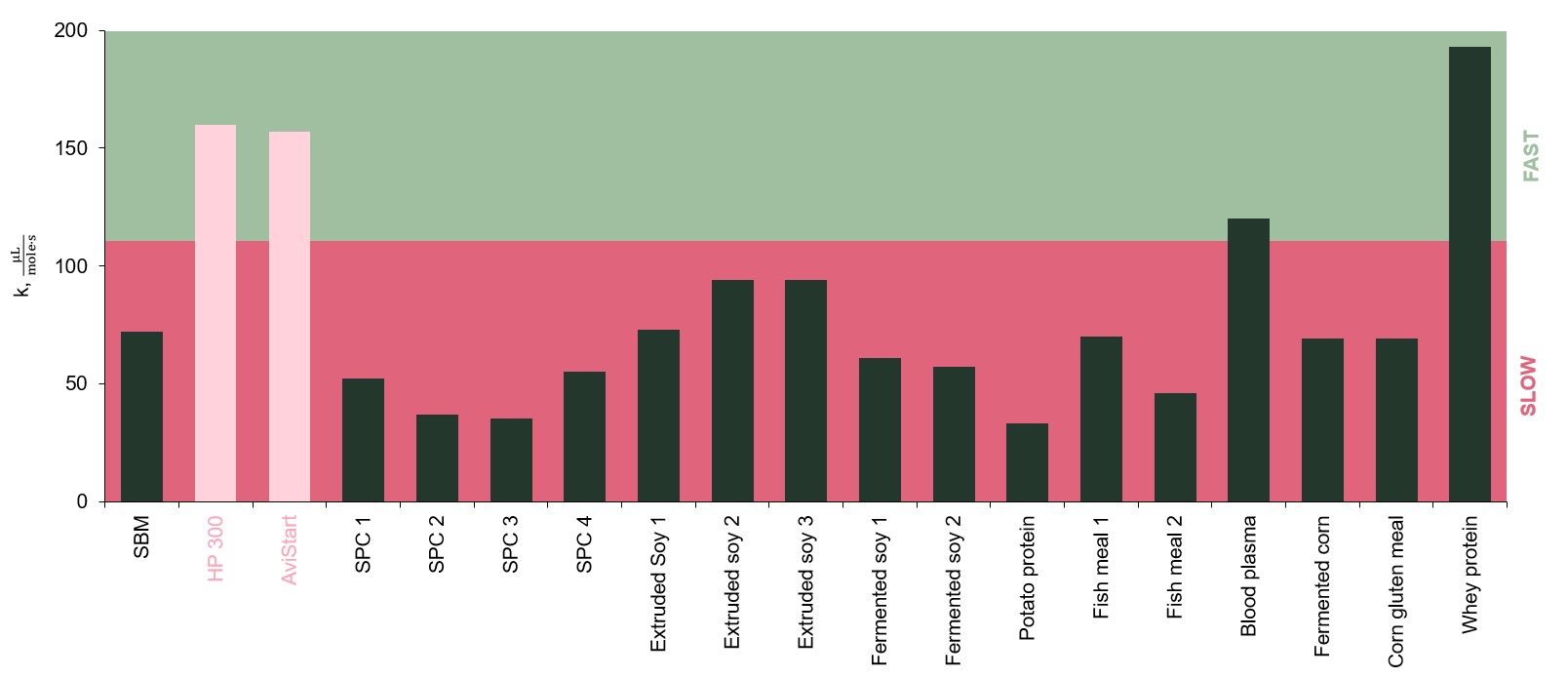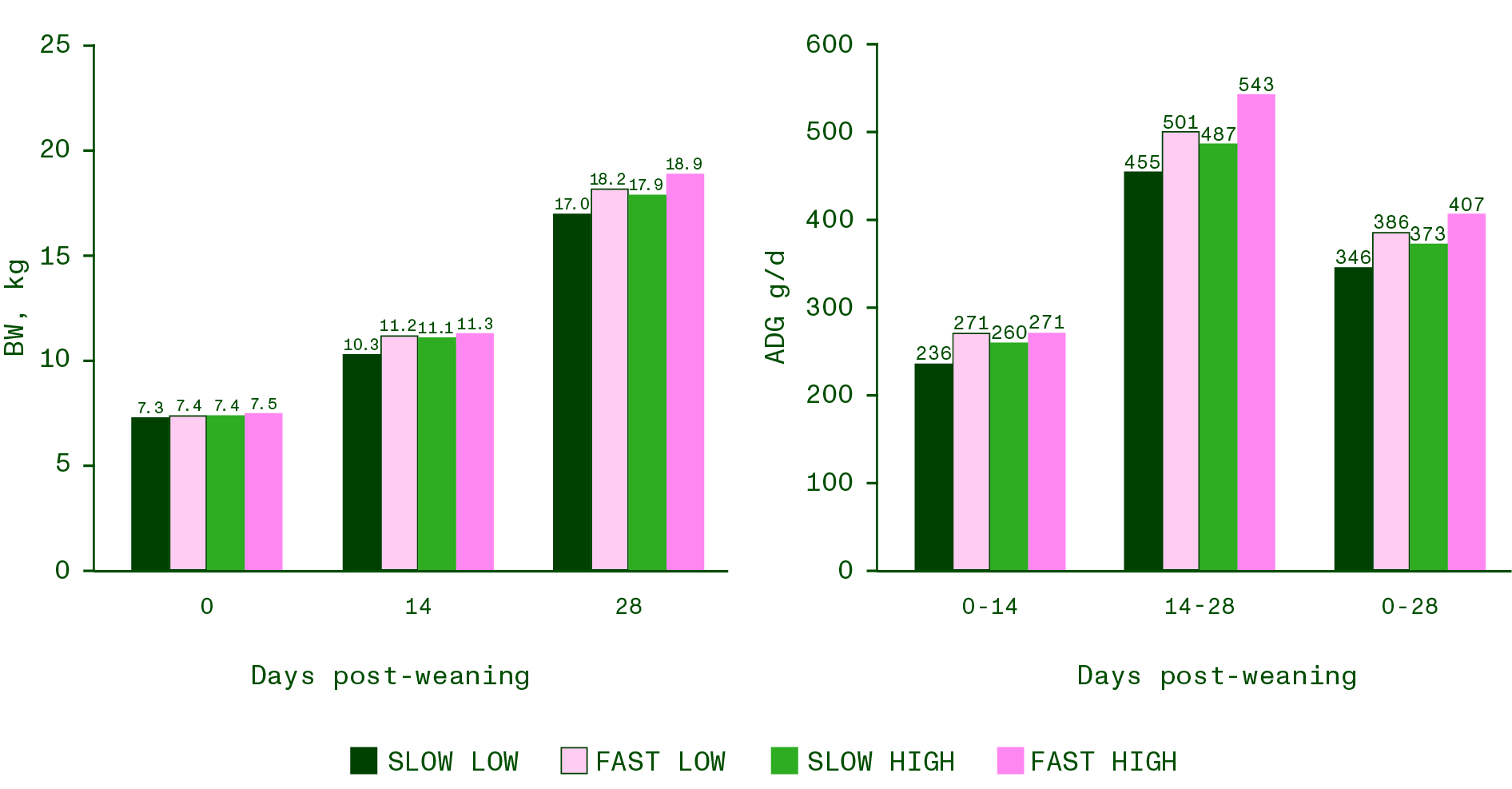Feedinfo Interview: Latest Protein Kinetics Research Proves Benefits of Fast Protein in Driving Growth Performance, Says Hamlet Protein
Interview with Jessika van Leeuwen PhD MSc – Then Global Category Manager Swine, Hamlet Protein. Originally published on Feedinfo, May 2024.
Research on protein kinetics – how quickly protein is available to an animal – is gathering pace, producing results which are likely to change our approach to this key nutrient in livestock diets.
In today’s Industry Perspectives, we talk to Hamlet Protein’s Dr. Jessika Van Leeuwen, Global Category Manager for Swine, about the firm’s latest research on this emerging and influential field. Explaining the context of the work, she discusses the surprising results obtained in recent laboratory and field trials, and the impact this will have on weaned pig performance.
We also discuss what this will mean for nutritionists and pig producers as they aim to formulate diets which will maintain growth rates and protein efficiency, even at low crude protein levels, while also reducing nitrogen excretion.
[Feedinfo] As a brief introduction before we delve into some exciting new research, the premise of protein kinetics is based around proteins being either fast or slow. What does this mean, why does it matter, and can you give some examples of fast and slow proteins?
[Jessika Van Leeuwen] The faster a protein source is digested and absorbed, the faster it becomes available for the animals. Research now shows that faster protein ingredients are also better used for growth and performance than slower ingredients, which means less protein is wasted. Most vegetal proteins are quite slow and animal proteins are generally fast protein. Hamlet Protein however uses a unique production method using enzymes which results in a vegetal protein that is just as fast as some animal proteins.
[Feedinfo] Since publishing your last Industry Perspectives on protein kinetics, you have conducted more research which shows some surprising results. Can you talk us through details of the latest trial and the results you have obtained?
[Jessika Van Leeuwen]We have been very busy conducting research both on thein vitroprotein kinetics characteristics of different ingredients but also on how to apply this knowledgein vivo.
The interesting part of this research is that ingredients that were generally considered as highly digestible and good for young animal diets turned out to consist of very slow protein – like SPCs (soy protein concentrates). It also revealed that from all vegetal protein sources, Hamlet Protein products show the fastest protein hydrolysisin vitroand even outperform animal proteins like fish meal and blood plasma (see figure 1).

Figure 1: Speed of protein hydrolysation as measured by the hydrolysis constant k[µL/(mole*s); µL=microliter NaOH needed to keep pH at 8 during hydrolysis (acid is released) and s=seconds for soy-based protein, fish meal, blood plasma, fermented corn, corn gluten meal and sweet whey when incubated with proteolytic enzymes for 120 minutes.
So, we used this knowledge to test the hypothesis that fast protein results in better growth due to higher protein efficiency. We conducted a trial in weaned pigs using slow protein in the form of SPC and fast protein in the form of HP300. We designed a 2*2 factorial design trial with low (16%) vs high (19%) crude protein (CP) either with 10-15% fast or with 10-15% slow protein.
We found that growth performance was better for pigs on fast protein. Interestingly piglets on low CP levels but fast protein were able to match, and even numerically outperform, the growth performance of pigs on high CP but slow protein (see figure 2).

Figure 2: Growth performance for SLOW LOW (SPC 16%CP), FAST LOW (HP300 16%CP), SLOW HIGH (SPC 19% CP) and FAST HIGH (HP300 19% CP) (BW D0, D14, D28) and ADG (g/d) ( D0-14, D14-28, D0-28).
So, fast protein is more efficiently used for growth than slow protein. Even at lower CP levels we have seen better growth performance compared to slow protein from SPC. This was confirmed by lower nitrogen excretion rates in pigs on fast protein.
[Feedinfo] Can you explain how fast protein produces better results across such a broad range of parameters?
[Jessika Van Leeuwen]The nice things about optimising the diet for fast protein is that, firstly, fast protein is better utilised for growth as amino acid absorption is more efficient in the upper part of the small intestine.
Secondly, it allows for a synchronisation with the absorption of amino acids coming from synthetic amino acids which results in a higher protein efficiency and reduced waste of amino acids. As a result, you have a better FCR, higher growth and reduced nitrogen waste.
[Feedinfo] What does this new information mean for diet formulation when it comes to young pigs? Will it change current practice?
[Jessika Van Leeuwen]Knowing the protein kinetics of a protein source will allow nutritionists to formulate diets with a higher protein biological value, optimising animal performance and therefore feed cost, and reducing nitrogen excretion into the environment.
Young animals have a very high protein requirement but underdeveloped digestive capacity. They need a lot of protein to further develop their organs, while not fully equipped to extract all the required amino acids from protein in the diet.
In the current practice of feed formulation, digestible amino acids, and net or metabolizable energy contents are used as fixed values of feed ingredients to optimise diets. This is quite convenient but limited as it ignores the variation in nutrient kinetics of different ingredients and does not account for interactions happening between ingredients before and after absorption.
Differences in protein kinetics have consequences for diet formulation. First, young animals have a high requirement for fast protein. Secondly, when looking to replace a protein source like, for instance, blood plasma, it is important to replace it with an equally fast protein source in order not to change the total protein kinetics of the diet.
[Feedinfo] This is clearly a positive development for sustainability and profitability – how do you plan to translate this research success to large-scale commercial use, and what is it likely to mean for individual farmers and for the livestock industry as a whole?
[Jessika Van Leeuwen]Protein kinetics is a game changer for the protein market as it separates premium fast protein ingredients from slow proteins. Fast proteins such as HP300 are needed to optimise protein efficiency and synchronise with synthetic amino acids while slow proteins like SPC contribute to the nutritional requirement of crude protein alone.
In an era where zinc oxide and antibiotic growth promoters are banned from nursery formulas, low crude protein diets are necessary to avoid protein fermentation. However, this usually results in a loss of growth performance. Our research now clearly shows that the use of fast protein in low CP diets compensates for loss of growth performance and allows a higher protein efficiency.
With pressure on environmental protection, the reduction in nitrogen excretion coming from the use of fast protein will become increasingly more important.
[Feedinfo] What can we expect to see next in terms of protein kinetics work from Hamlet Protein?
[Jessika Van Leeuwen]Now we have tested many protein ingredients and know which are fast and which are slow, we are working on a system that will allow our customers to consider the level of fast protein from an ingredient in their feed formulation system to make sure they can optimise diets for fast protein according to species requirements.
Discover the benefits of fast protein kinetics
The use of fast protein improves production efficiency and growth performance. Faster protein digestion leads to a faster absorption of amino acids after feeding, which increases the protein availability for tissues, milk and organs. The resulting rapid and synchronized absorption of amino acids increases protein deposition and thus reduces feed conversion rate.

